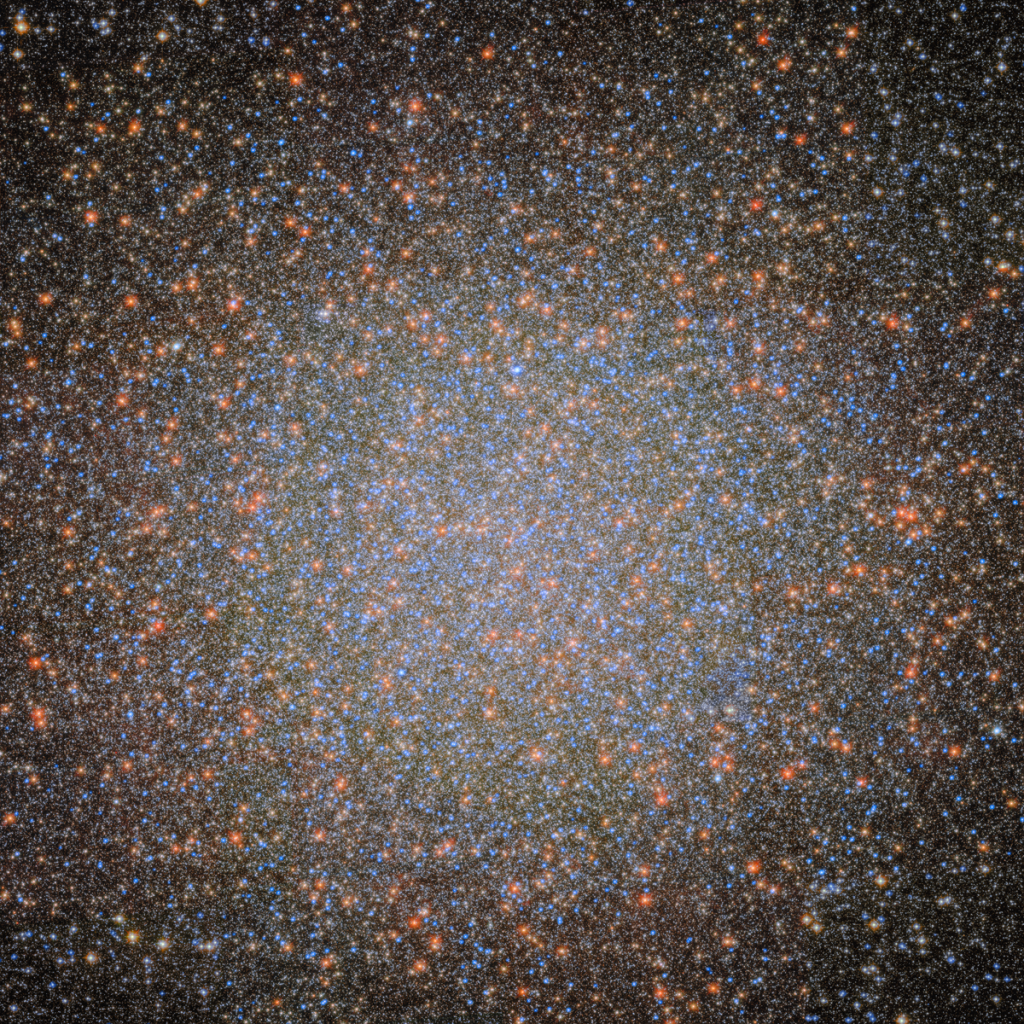Most known black holes are either very massive, such as the supermassive black holes at the centers of giant galaxies, or relatively light, with masses less than 100 times that of the Sun. However, intermediate-mass black holes (IMBHs) are rare and are considered a rare “missing link” in black hole evolution.
Now, using more than 500 images from 20 years of observations with NASA’s Hubble Space Telescope, an international team of astronomers is tracking the motions of seven fast stars in the innermost region of the globular cluster Omega Centauri, searching for evidence of an intermediate-mass black hole.
These stars provide new and compelling evidence for the existence of gravitational influences from intermediate-mass black holes. Only a few IMBH candidates have been discovered so far..
Omega Centauri is made up of roughly 10 million gravitationally bound stars. The cluster is about 10 times more massive than other large globular clusters and roughly the same mass as a small galaxy.
Among the many questions scientists want to answer are whether IMBHs exist and, if so, how common they are, whether supermassive black holes grow from IMBHs, how IMBHs themselves form, and whether dense star clusters are preferred locations for IMBHs.
Astronomers Now They created a huge catalog of the movements of these stars.They measured the velocities of 1.4 million stars collected from images of the cluster taken by the Hubble Telescope. Although most of these observations were intended to calibrate the Hubble Telescope’s instruments rather than for scientific use, they proved to be an ideal database for the team’s research efforts.
“We found seven stars that shouldn’t be there,” explains Maximilian Höberle of the Max Planck Institute for Astronomy in Germany, who led the study. “They are moving so fast that they will escape the cluster and never come back. The most likely explanation is that a very massive object is pulling on them with its gravity, keeping them near the center. The only object that is this massive is a black hole, with a mass at least 8,200 times that of the Sun.”
Some studies suggest that an IMBH exists at Omega Centauri, but others suggest that its mass may be due to a central cluster of stellar-mass black holes, and that an IMBH is unlikely to exist since there are no stars moving fast enough to meet the required escape velocity.
“This discovery is the most direct evidence to date for the presence of an intermediate-mass black hole in Omega Centauri,” added team leader Nadine Neumeier of the Max Planck Institute for Astronomy in Germany, who initiated the study with Anil Seth of the University of Utah in Salt Lake City. “This is very intriguing because very few other black holes with a similar mass are known. The Omega Centauri black hole may be the best example of an intermediate-mass black hole in our cosmic neighborhood.”
If confirmed, the candidate black hole would be 17,700 light years away, which would make it closer to Earth than the 4.3 million solar mass black hole at the centre of the Milky Way, which is 26,000 light years away.
Omega Centauri is visible to the naked eye from Earth and is one of the favorite objects for stargazers living in the Southern Hemisphere. Located just above the plane of the Milky Way, the cluster appears roughly the same size as the full moon when viewed from a dark countryside. The cluster was first described as a single star in Ptolemy’s catalogue about 2,000 years ago. Edmond Halley reported it as a nebula in 1677. British astronomer John Herschel first recognized it as a globular cluster in the 1830s.
The discovery paper led by Hebel et al. Publish online Today’s Journal Nature.
The Hubble Space Telescope has been operating for more than 30 years and continues to make groundbreaking discoveries that shape our fundamental understanding of the universe. Hubble is an international cooperative project between NASA and ESA (European Space Agency). NASA’s Goddard Space Flight Center in Greenbelt, Maryland manages the telescope and mission operations. Lockheed Martin Space, based in Denver, Colorado, also supports mission operations at Goddard. The Space Telescope Science Institute in Baltimore, Maryland, operated by the Association of Universities for Research in Astronomy, performs Hubble science operations for NASA.


